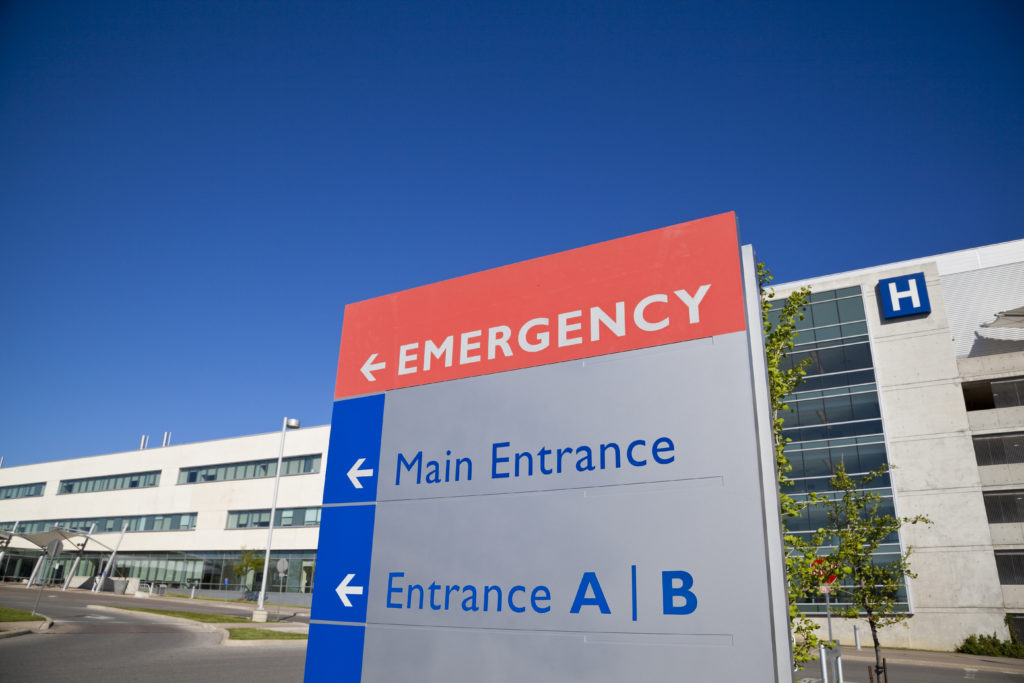
The DFW Hospital Council posts guest blogs by Associate Members. The following was provided by Katten Muchin Rosenman LLP.

By Laura Keidan Martin, Kenya Woodruff and Rachel Adams of Katten Muchin Rosenman LLP
On May 3, CMS issues a draft letter to State Survey Agency Directors regarding “Guidance for Hospital Co-location with Other Hospitals or Healthcare Facilities” (Guidance) that is intended to provide clarity on how CMS/State Agency Surveyors will evaluate a hospital’s co-located space and staffing arrangements.1 The Guidance was issued in draft form and the comment period closed on July 2, 2019. Healthcare facilities that are looking at innovative healthcare delivery models should be aware of this move by CMS.
CO-LOCATION
Under the Guidance, CMS provides that the Medicare Conditions of Participation (COPs) allow hospitals to co-locate (i.e., share common areas on the same campus/building) with other hospitals or health care entities as long as each entity demonstrates separate, independent compliance with the COPs. A hospital is required to have distinct spaces, including clinical spaces, over which it maintains control at all times. CMS explains that this is necessary for the protection of patients including their right to privacy and to receive care in a safe environment.
CMS further clarifies that hospitals are allowed to share space consisting of public spaces and paths. Examples include public lobbies, waiting rooms, reception areas, restrooms, staff lounges, elevators, main entrances, and main corridors through non-clinical areas. Travel between separate entities utilizing a path through clinical spaces would not be acceptable for patient safety and privacy concerns. For example, a public path of travel though a main hospital corridor with distinct, identified entrances to departments is acceptable but a shared pathway through an inpatient nursing unit or clinical hospital department would be unacceptable. CMS notes that any non-compliance in a shared space may constitute non-compliance with the COPs for both entities.
CONTRACTED SERVICES
CMS states that a hospital may provide services under contract with another co-located hospital or health care entity such as laboratory, dietary, pharmacy, maintenance, housekeeping, security, food preparation, delivery services, and utilities (e.g., fire detection and alarm systems). For clinical services provided under contract with a co-located entity, the hospital is not required to notify patients of all services provided under contract as the services still must be provided under governing body oversight like any other service provided by the hospital.
STAFFING CONTRACTS
CMS reiterates that a hospital is responsible for independently meeting COP staffing requirements. Particularly, when staff are obtained under contract from another entity (including co-located entities) they must be assigned to work solely for one hospital during any specified shift and cannot “float” between two separate entities during any given shift—including being on-call at one entity while providing services at the other. CMS clarifies that this does not preclude staff from providing services to two co-located entities, but the staff may not provide services to the two entities simultaneously. The medical staff also may be shared between co-located hospitals if the staff is privileged and credentialed at each hospital.2 All staff providing services under contract must receive appropriate education and training on all relevant hospital policies and procedures and should receive the same training as provided to all employees.
EMERGENCY SERVICES
CMS directs that all hospitals must anticipate emergency scenarios of its typical patients. Contracting with another hospital for the initial evaluation and treatment of patients experiencing an emergency is permitted as long as the staff is not simultaneously providing duties at another hospital. CMS acknowledges that there may be situations when the initial treatment performed in one hospital requires an appropriate transfer to the other co-located hospital. Hospitals without emergency departments cannot arrange for a co-located hospital to respond to its patient emergencies in order to appraise the patient and provide initial emergency treatment. It is further clarified that if a hospital without an emergency department contracts for emergency services with another hospital’s emergency department it is considered to provide emergency services and must meet Emergency Medical Treatment and Active Labor Act (EMTALA) requirements.
IMPACT OF NEW REGULATIONS
The draft Guidance liberalizes the interpretation of the COPs and provider-based requirements contained in CMS staff advisory letters by permitting shared entrances, reception areas, waiting areas and corridors through non-clinical space. To determine how the Guidance may impact operations, co-located entities should:
• Review floor plans to ensure that clinical space is used solely by a single entity and that shared space consists of only non-clinical space.
o If all or any portion of a co-located entity’s space is accessible only by traveling through the other entity’s space, the path of travel must be through non-clinical areas.
• Review all contracts for staffing services to ensure they provide adequate staffing levels, oversight/evaluation and training.
o Contracted staff must have knowledge of and adhere to quality and performance standards of the hospital and the governing body should be able to demonstrate how it monitors, orients, and trains all staff.
• Review staffing schedules to ensure that staff is always immediately available and not simultaneously scheduled to provide services for two separate entities.
• For hospitals without emergency departments, review the process for responding to patient emergencies and whether staff is properly trained to use emergency equipment and to appraise emergencies, provide initial treatment and make appropriate referrals.
1 CMS notes guidance is specific to general hospitals and does not address requirements of any other Medicare-participating entity such as psychiatric hospitals, ASCs, rural health clinics, IDTFs, etc.
2 CMS notes if medical staff shared between co-located hospitals that are part of a multiple hospital system, the hospitals should refer to 42 CFR § 482.22. Section 482.22 discusses requirements for hospital systems with unified integrated medical staff.
Katten Muchin Rosenman LLP – CMS revisits Hospital Co-location
09/19/2019